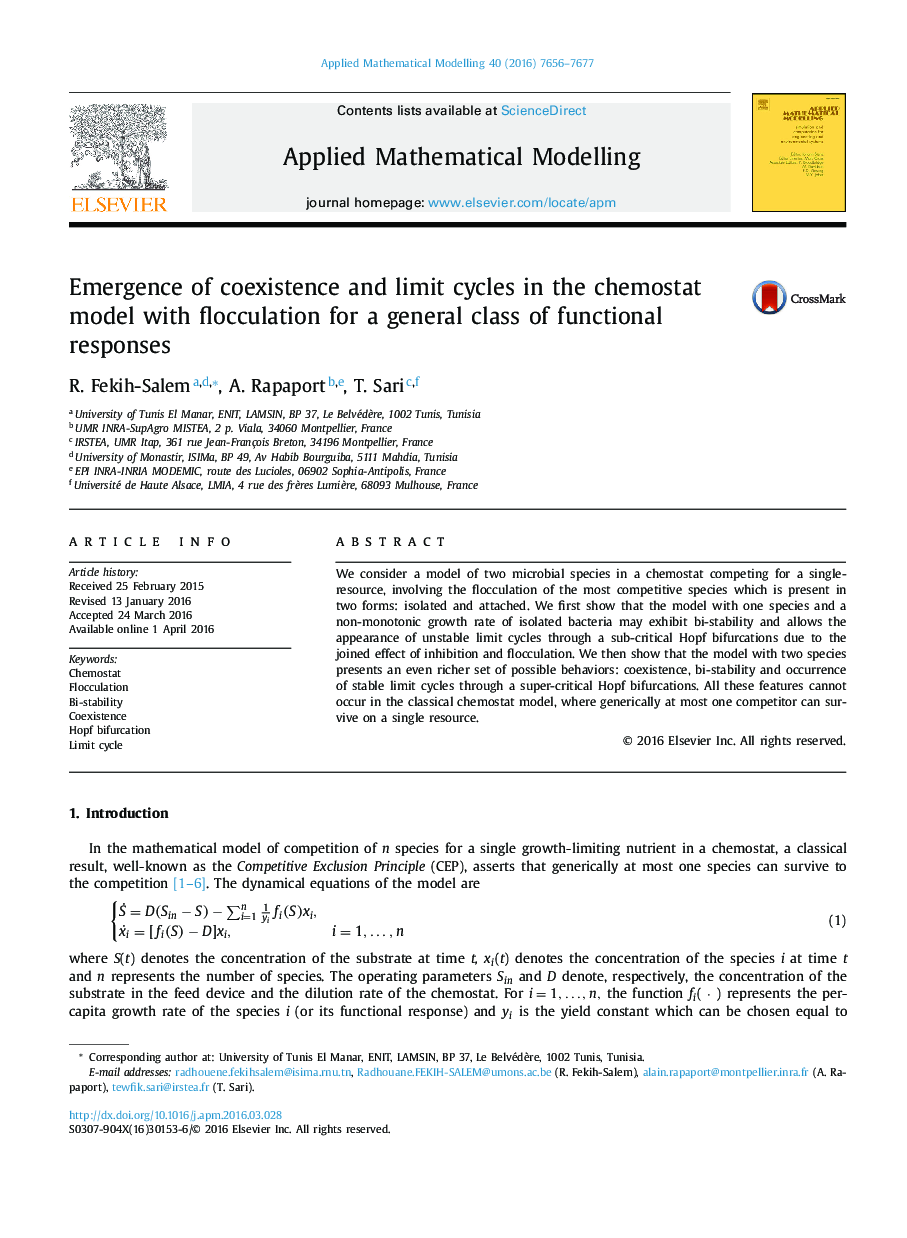| Article ID | Journal | Published Year | Pages | File Type |
|---|---|---|---|---|
| 5471314 | Applied Mathematical Modelling | 2016 | 22 Pages |
â¢A flocculation model of two microbial species in a chemostat is presented.â¢Flocculation mechanism and substrate inhibition can lead to oscillations.â¢The bifurcation analysis is performed according to control parameters.â¢We show the occurrence of limit cycles through Hopf bifurcations.
We consider a model of two microbial species in a chemostat competing for a single-resource, involving the flocculation of the most competitive species which is present in two forms: isolated and attached. We first show that the model with one species and a non-monotonic growth rate of isolated bacteria may exhibit bi-stability and allows the appearance of unstable limit cycles through a sub-critical Hopf bifurcations due to the joined effect of inhibition and flocculation. We then show that the model with two species presents an even richer set of possible behaviors: coexistence, bi-stability and occurrence of stable limit cycles through a super-critical Hopf bifurcations. All these features cannot occur in the classical chemostat model, where generically at most one competitor can survive on a single resource.
